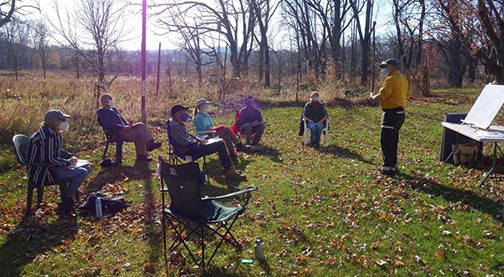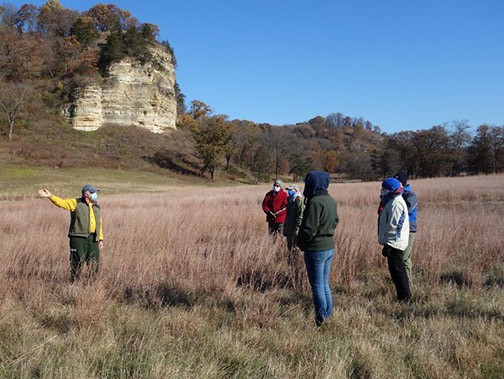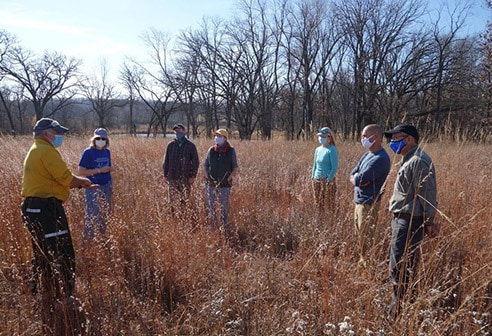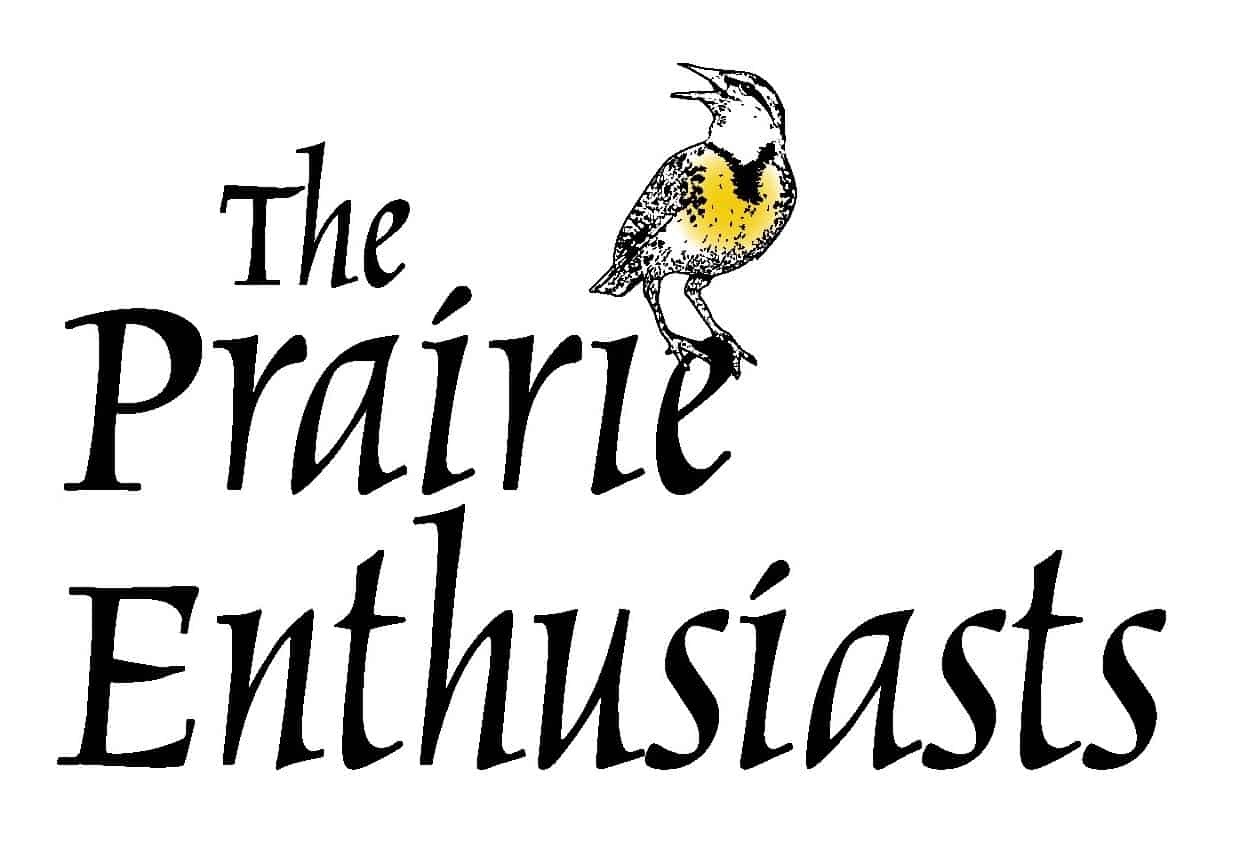This article was a collaboration with Jeb Barzen.
Interested in pitching in to save our fire-dependent ecosystems? TPE’s next prescribed burn crew training will be an online-only class on February 23, 2021 (the day before our TPE Online Conference). Instructors Rob Baller, Scott Fulton, and Andy Sleger from the Empire-Sauk Chapter will lead this all-day event. Visit the conference page to learn more.
—–
More fire safely — and effectively — on the ground.
That’s the wish of educator and Wisconsin Prescribed Fire Council member Jeb Barzen. “In Wisconsin we are currently burning 5-10% of our fire-adapted communities that require periodic fire management,” notes Jeb, who is also a site steward for TPE. “The longevity of these remnant ecosystems, that intelligent tinkerers wish to save, is vanishing. Concurrently, we have more landowners (both private and public) that want burning to be done than we have resources to respond.”
To develop more trained fire ecologists, Jeb and co-instructors Rob Nurre, Rob Baller, and Scott Fulton have organized a series of annual prescribed burn classes over the last five years. This year, TPE’s Prairie Sands Chapter sponsored two basic burn training sessions in October and November. Despite the unusual circumstances, both classes were a success.
Each class was held outside and followed TPE’s guidelines for events during COVID-19. Class sizes were limited to eight masked students representing a range of ages and backgrounds. The students took notes from lawn chairs spaced apart in the grass while the instructors taught at a distance, using a whiteboard to diagram burn scenarios. Interspersed with these lectures were field explorations of how fuel types relate to fire behavior and weather. Whether or not the weather would allow actual fire was a lesson in itself.

Outdoor lecture. Photo by Rob Baller
Friends and members of TPE generously offered the use of their private properties for these classes. The October 31 class convened at Cassell Savanna in Sauk County. On this cold and windy Halloween day, the students wore thick hats and long underwear. By the time the second class (at Prairie Hill Farm in Marquette County) rolled around a week later, the weather had changed to 70°F with all sunshine.

Field training at Cassell Savanna. Photo by Rob Baller
Despite the difference in temperature, both weekends were made more complicated by high winds. Live fire was at a minimum; only the students in the second class could practice burning breaks, and only in the shelter of the woods. Even so, the students remained engaged, socially distant, and open to the lessons that these conditions provided. Students later described the class as “interesting, engaging, enjoyable” and even “the best of the [burn classes] that I’ve taken”.
Nevertheless, two small classes alone won’t solve the problems facing fire ecologists. More frequent and widespread training is required. “Just a few unsafe fires can greatly inhibit our overall ability to burn because the public will not support risky ventures,” Jeb observes. “Ineffective fires also waste limited resources that we can ill-afford to squander… Sponsors of prescribed burn courses provide both fire practitioners and pyroecologists the very basis necessary to succeed at conservation. We need to do more.”

Field training at Prairie Hill Farm. Photo by Rob Baller

